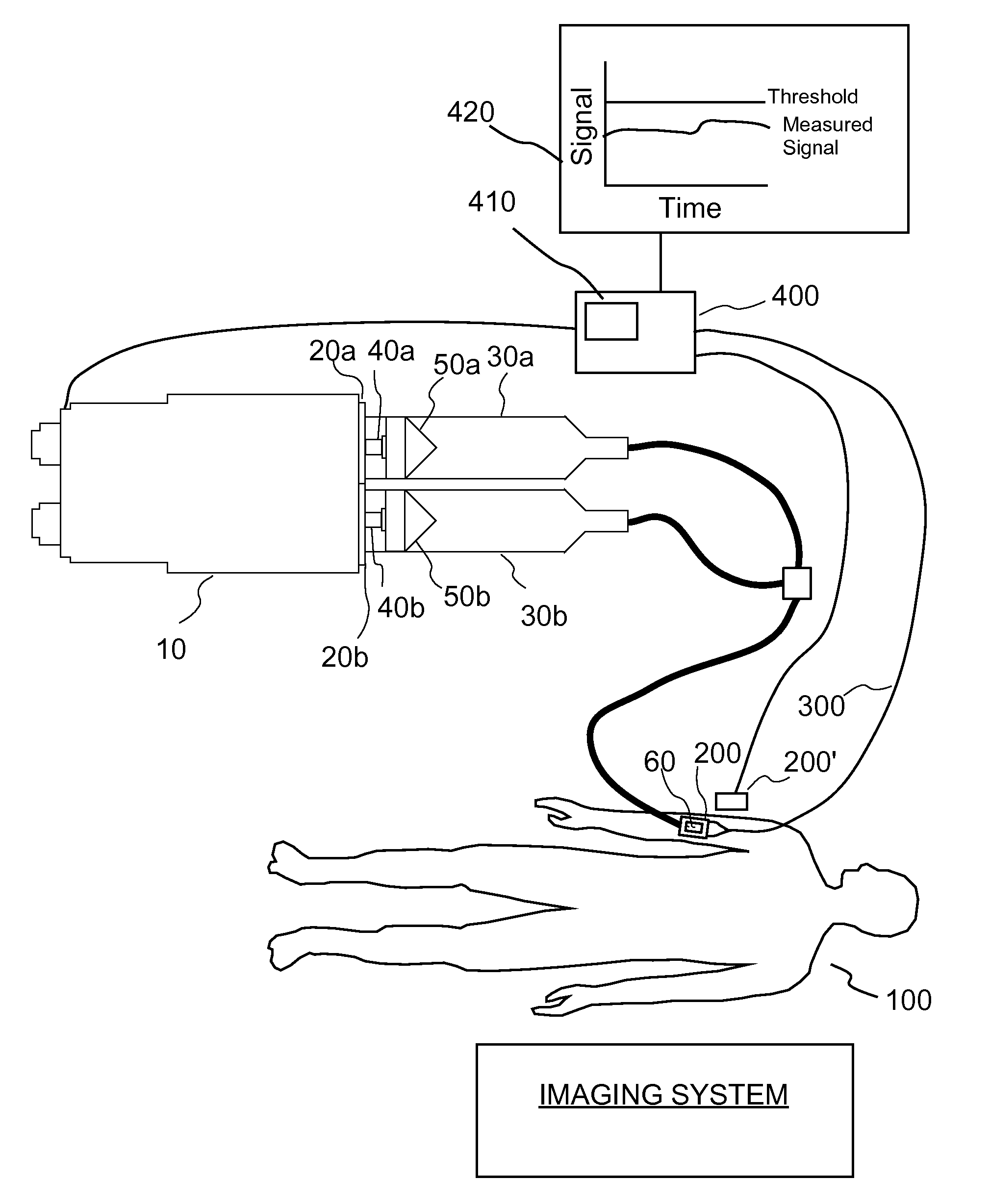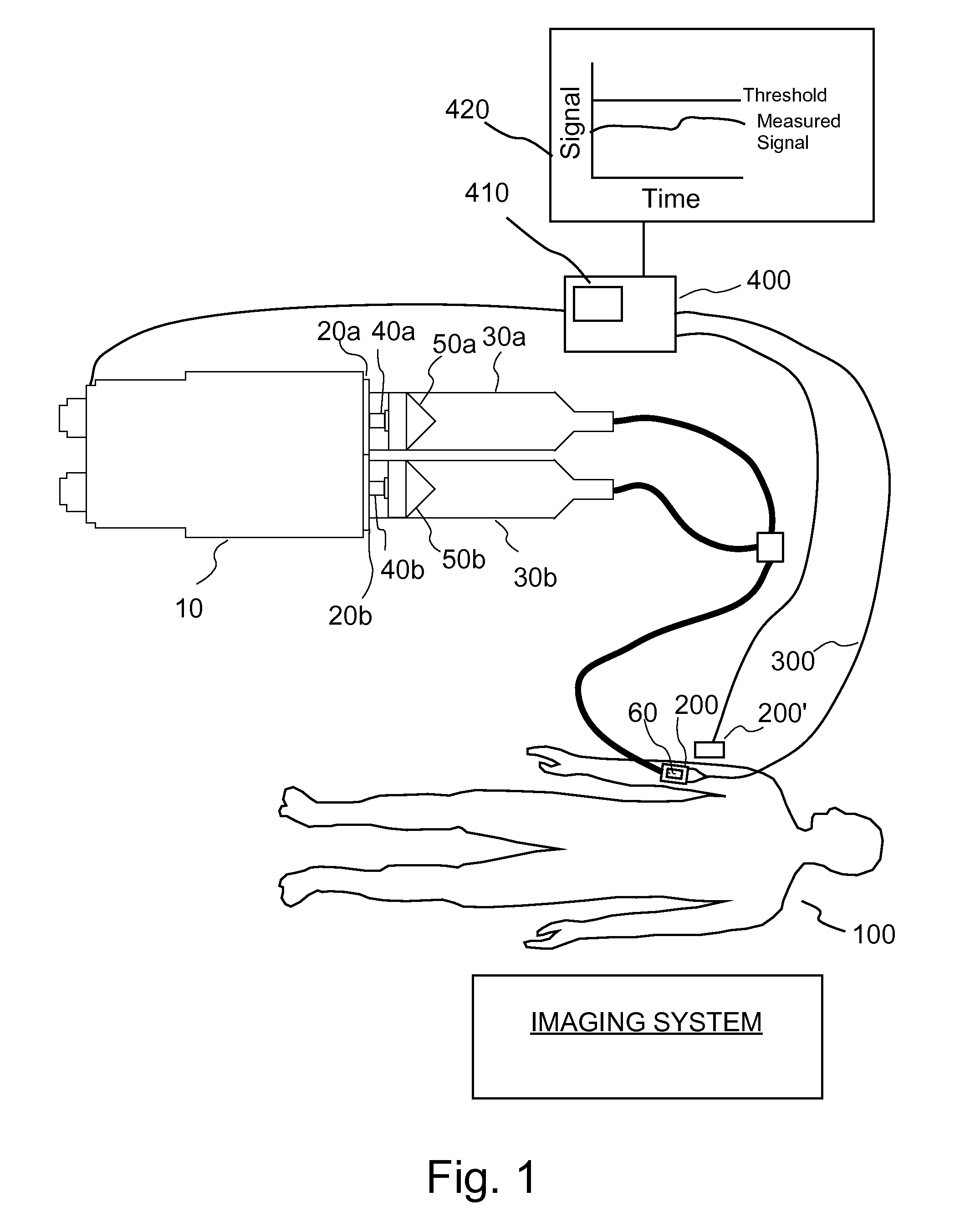Devices, systems and methods for detecting increase fluid levels in tissue
a technology of fluid level and tissue, applied in the field of devices, systems and methods of detecting increased fluid level in tissue, can solve the problems of increasing the risk of extravasation, affecting the safety of patients, and causing serious injury to patients
- Summary
- Abstract
- Description
- Claims
- Application Information
AI Technical Summary
Benefits of technology
Problems solved by technology
Method used
Image
Examples
Embodiment Construction
[0033]In several embodiments, the present invention provides a closed-loop technique for determining the stability of an injection site by administering a relatively nontoxic, harmless or benign first fluid (for example, saline) to a patient while monitoring the injection site with an extravasation sensor. This administration step occurs prior to the injection of a second fluid, for example, a therapeutic or diagnostic bolus of a drug. If the first fluid (for example, saline) is determined to extravasate into the tissue, the first fluid is less toxic than the second fluid to be injected and is likely to cause complications as a result of the extravasation.
[0034]As illustrate in FIG. 1, one embodiment of an injection system of the present invention includes an injector 10 such as the STELLANT® injector available from Medrad, Inc. of Indianola, Penn. Injector 10 includes two syringe interfaces 20a and 20b to which two syringes 30a and 30b are removably attachable. Two drive members or...
PUM
 Login to View More
Login to View More Abstract
Description
Claims
Application Information
 Login to View More
Login to View More - R&D
- Intellectual Property
- Life Sciences
- Materials
- Tech Scout
- Unparalleled Data Quality
- Higher Quality Content
- 60% Fewer Hallucinations
Browse by: Latest US Patents, China's latest patents, Technical Efficacy Thesaurus, Application Domain, Technology Topic, Popular Technical Reports.
© 2025 PatSnap. All rights reserved.Legal|Privacy policy|Modern Slavery Act Transparency Statement|Sitemap|About US| Contact US: help@patsnap.com



